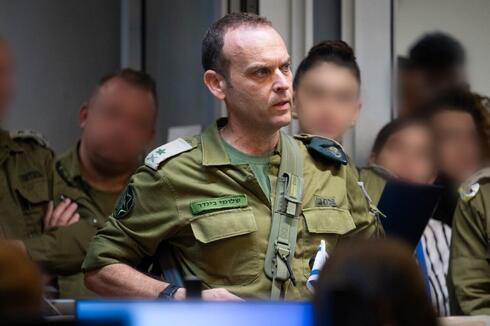IDF operations chief left in the dark on Hamas’ Oct. 7 plan, classified internal probe reveals
By Yoav Zitun
Copyright ynetnews

The IDF’s Operations Division, which directs Israel’s forces in routine and wartime, failed to receive key intelligence about Hamas’ invasion plan and only acted on partial warnings hours before the Oct. 7 assault, according to findings from an internal probe that remain classified. Maj. Gen. Shlomi Binder, who headed the division at the time and is now chief of Military Intelligence, was never briefed during his tenure on Hamas’ “Jericho Wall” plan. The invasion blueprint was uncovered by Unit 8200 more than a year before the attack and turned into an intelligence report in 2022. Binder only received word of unusual activity in Gaza at 2:30 a.m. on Oct. 7, five hours after the Shin Bet security service and Military Intelligence first noticed signs. Binder’s actions that night are under review by a committee led by retired Maj. Gen. Sami Turgeman, which is examining the IDF’s own investigations into operational failures. Binder is expected to receive backing from current Chief of Staff Lt. Gen. Eyal Zamir. He has argued that even if he had convened a full situational assessment during the night, “it would not have changed the outcome.” On Sunday, the chief of staff decided to freeze both the handling and publication of the committee’s findings, fearing disruption inside the military ahead of a planned maneuver in Gaza that is expected to continue into 2026. The move was meant to maintain unity among the army’s senior ranks at a critical stage. Military officials said the Turgeman Committee found the investigation of the Operations Division to be incomplete, especially regarding its conduct on the night before the attack. Unlike other reviews — such as those into the Southern Command and Gaza Division — this case was fully documented on video in the IDF’s underground command bunker in Tel Aviv, allowing investigators to follow events minute by minute. The probe revealed that Binder was not aware of Hamas’ actual invasion plan and instead was briefed on a contingency scenario called “Parash Pleshet,” which assumed at most two small-scale infiltrations involving up to 70 attackers. In reality, Hamas launched a mass assault across multiple points along the Gaza border. On the night before the attack, warning signs had already appeared in Gaza, but Binder was updated only at 2:30 a.m. in a phone call from his Shin Bet counterpart. He ordered two drones to scan the area one malfunctioned and the other took off too late. He also updated Navy officials and was aware of a conversation among generals led by then–Chief of Staff Lt. Gen. Herzi Halevi. Because the reports reaching him did not convey urgency, Binder scheduled a General Staff assessment for 8:30 a.m., with a smaller one under his command an hour earlier. The Operations Division later told investigators it relies on intelligence agencies and regional commands for information and does not operate its own intelligence unit. The IDF has not ruled out further probes into the Operations Division, as well as the Navy and Southern Command. Military officials said the Turgeman report has not yet been presented to either the chief of staff or Binder. They noted that the Operations Division formally declared a national emergency at 7:16 a.m., mobilizing the entire army. The army also responded to criticism that Binder did not convene a full General Staff meeting that night, saying he kept relevant officials updated individually, including air defense. Officials added: “Even if such a meeting had been held, it would not have changed the devastating outcome that struck Israel hours later.”



